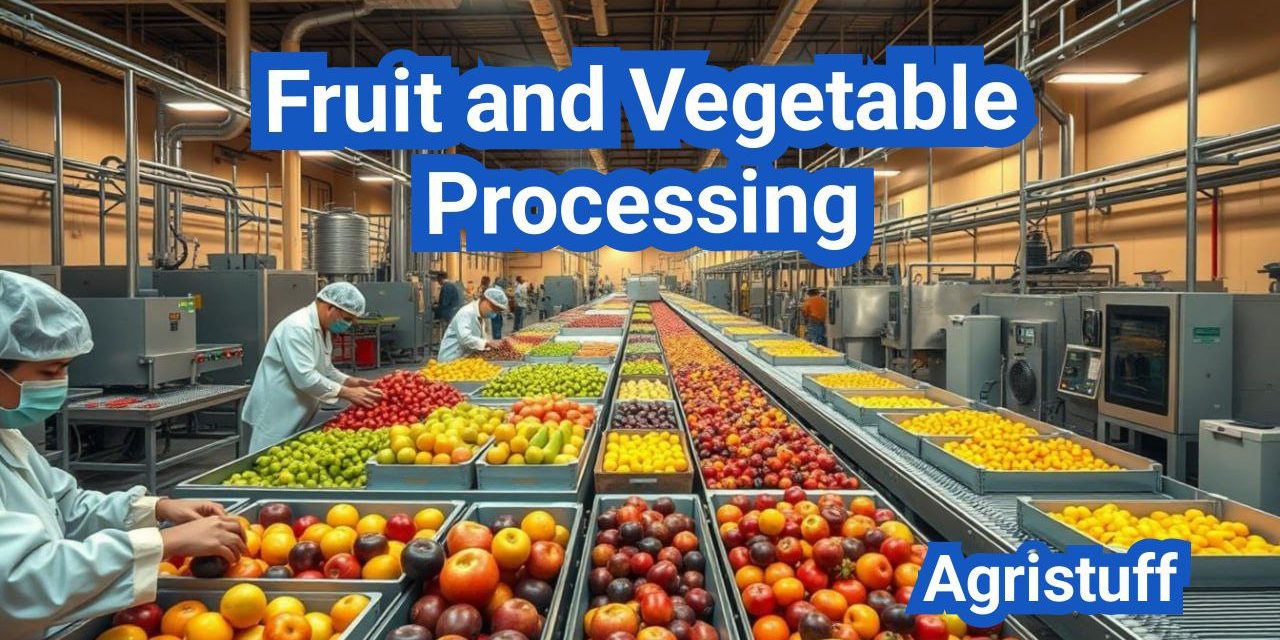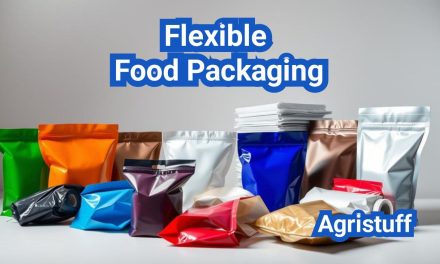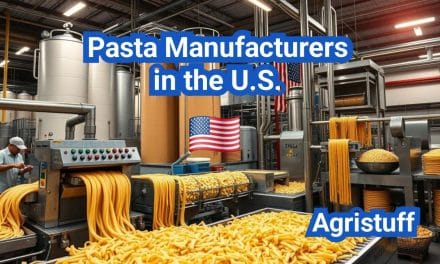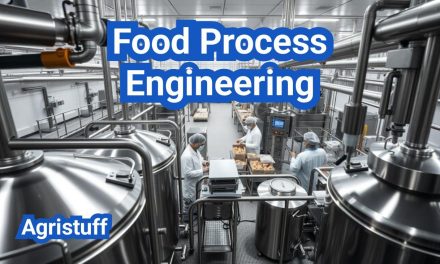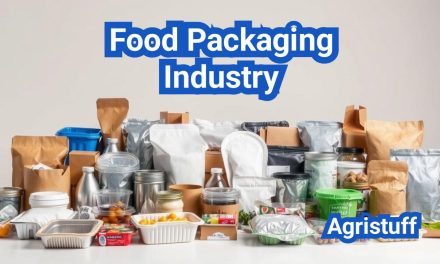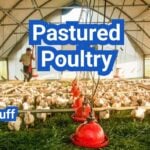The fruit and vegetable processing industry plays a vital role in enhancing the utilization value of produce, facilitating storage and transportation, and providing a variety of products for consumption.
Processing methods are generally divided into three categories: physical, chemical, and biological. Physical processing involves washing, cutting, and packaging, while chemical processing involves the use of preservatives and other chemicals to extend shelf life. Biological processing utilizes microorganisms to create products such as fermented foods.
These processing methods are crucial in making fruits and vegetables available throughout the year, regardless of seasonality. By understanding the different types of processing methods, consumers can make informed choices about the products they purchase.
Key Takeaways
- Fruit and vegetable processing enhances the utilization value of produce.
- Processing methods include physical, chemical, and biological categories.
- These methods facilitate storage, transportation, and consumption of fruits and vegetables.
- Understanding processing methods helps consumers make informed choices.
- The fruit and vegetable processing industry provides a variety of products.
The Importance of Fruit and Vegetable Processing
The fruit and vegetable processing industry plays a crucial role in the global food supply chain, transforming raw produce into a variety of products that are consumed worldwide. This industry is not only vital for meeting the demand for food but also for enhancing the economic viability of agricultural produce.
Global Market Overview and Size
The global fruit and vegetable processing market is experiencing significant growth, driven by the increasing demand for processed fruits and vegetables. This demand is fueled by consumer preferences for convenience, nutritional value, and year-round availability of produce. The market encompasses a wide range of products, including frozen fruits and vegetables, canned goods, and ready-to-eat meals.
According to industry reports, the global fruit and vegetable processing market is expected to continue its upward trend, driven by advancements in food processing technology and an expanding consumer base seeking healthy and convenient food options.
Benefits of Processing Fresh Produce
Processing fresh produce offers numerous benefits, including extended shelf life, enhanced nutritional value, and increased food safety. Techniques such as blanching and pasteurization help preserve the nutritional content of fruits and vegetables, making them available to consumers throughout the year.
Moreover, processed fruits and vegetables can be easily incorporated into a variety of dishes, providing consumers with convenient meal solutions. The processing industry also plays a critical role in reducing food waste by utilizing produce that may not be suitable for fresh market sale.
Challenges in the Processing Industry
Despite its many benefits, the fruit and vegetable processing industry faces several challenges. Maintaining the quality and safety of processed products is paramount, requiring stringent quality control measures throughout the processing chain.
Another significant challenge is the environmental impact of processing operations, including energy consumption and waste generation. The industry is responding to these challenges by adopting more sustainable practices and investing in energy-efficient fruit and vegetable processing machinery.
Understanding Raw Materials: Structure and Composition

The physiological characteristics of raw fruits and vegetables play a significant role in determining their processing quality. Understanding these characteristics is essential for optimizing processing methods and achieving high-quality products.
Physiological Characteristics of Fruits
Fruits are primarily composed of water, carbohydrates, and various bioactive compounds. Their physiological characteristics, such as ripening processes and respiration rates, significantly impact their processing. For instance, the ripening process can affect the texture and flavor of fruits, making it crucial to process them at the optimal stage of ripeness.
Ripening and senescence are critical physiological processes in fruits. Ripening involves a series of biochemical changes that make the fruit more palatable, while senescence refers to the aging process that eventually leads to spoilage. Understanding these processes helps in timing the harvest and processing to maximize quality.
Physiological Characteristics of Vegetables
Vegetables also have unique physiological characteristics that affect their processing. Unlike fruits, many vegetables are harvested before they reach full maturity. Their texture, flavor, and nutritional content can be influenced by factors such as harvesting time, handling, and storage conditions.
The cell structure of vegetables is another important characteristic. Vegetables with tightly packed cells tend to retain their texture better during processing. For example, carrots and beets have dense cell structures, making them suitable for various processing methods, including canning and freezing.
Factors Affecting Processing Quality
Several factors can affect the quality of processed fruits and vegetables, including their physiological characteristics, handling practices, and processing techniques. Understanding these factors is crucial for maintaining the quality of the final product.
| Factor | Description | Impact on Processing Quality |
|---|---|---|
| Ripeness at Harvest | The stage of ripeness when fruits or vegetables are harvested. | Affects texture, flavor, and overall quality. |
| Handling Practices | Care taken during harvesting, transportation, and storage. | Minimizes damage and spoilage. |
| Processing Techniques | Methods used for washing, cutting, and preserving. | Determines the final product’s quality and safety. |
In conclusion, understanding the physiological characteristics of fruits and vegetables is vital for optimizing their processing. By considering factors such as ripeness, handling practices, and processing techniques, producers can significantly improve the quality of their products.
Pre-Processing Operations
To ensure high-quality processed fruits and vegetables, pre-processing operations must be carefully managed. These initial steps are crucial in maintaining the quality and safety of the produce from the point of harvesting to the processing stage.
Harvesting Considerations
Harvesting techniques significantly impact the quality of fruits and vegetables. The timing, method, and handling during harvesting can either preserve or damage the produce. For instance, harvesting at the optimal maturity stage is essential for achieving the best flavor and texture.
Optimal Harvesting Practices:
- Harvest fruits and vegetables at the right maturity stage.
- Use appropriate harvesting tools to minimize damage.
- Handle produce gently to avoid bruising.
Sorting and Grading Techniques
After harvesting, sorting and grading are critical for removing defective or unripe produce. This step ensures that only high-quality fruits and vegetables are processed, enhancing the overall quality of the final product.
| Sorting Criteria | Description | Benefits |
|---|---|---|
| Size and Shape | Uniformity in size and shape | Enhances appearance and simplifies packaging |
| Color and Maturity | Sorting based on color and maturity stage | Ensures optimal quality and flavor |
| Defect Removal | Removing damaged or diseased produce | Prevents contamination and spoilage |
Storage Before Processing
Proper storage conditions before processing are vital for maintaining the quality of harvested produce. Factors such as temperature, humidity, and storage duration must be controlled to prevent deterioration.
Effective Storage Practices:
- Store produce in a cool, dry place or refrigerated conditions as needed.
- Maintain optimal humidity levels to prevent moisture loss.
- Monitor storage conditions regularly to ensure produce quality.
Washing and Sanitizing Methods
Effective washing and sanitizing methods are crucial for removing dirt and bacteria from fruits and vegetables. The quality of the water used for washing, the type of sanitizing solution employed, and the equipment utilized can significantly impact the cleanliness and safety of the produce.
Postharvest Water Quality Requirements
The water used for washing fruits and vegetables must be of adequate quality to prevent re-contamination. Postharvest water quality is critical in maintaining the freshness and safety of the produce. The water should be free from harmful pathogens, chemicals, and other contaminants. Regular testing of the water is necessary to ensure it meets the required standards.
Produce Sanitizing Solutions and Their Efficacy
Various sanitizing solutions are available for washing fruits and vegetables, including chlorine-based solutions, ozone, and organic acids. The choice of sanitizing solution depends on the type of produce, the level of contamination, and the equipment used. It’s essential to follow the recommended concentrations and contact times to ensure efficacy.
- Chlorine-based solutions are widely used due to their effectiveness against a broad range of pathogens.
- Ozone is a strong disinfectant that can be used for washing produce, offering the advantage of leaving no residues.
- Organic acids, such as citric acid, can be used as sanitizing agents, providing a safer alternative for some types of produce.
Equipment for Commercial Washing
Commercial washing equipment varies from simple brush washers to complex systems that combine washing, sanitizing, and drying. The selection of equipment depends on the scale of operation, the type of produce, and the desired level of automation. Modern commercial washing systems often incorporate features like water recycling and precise temperature control to optimize the washing process.
Home Washing Best Practices
For consumers, washing fruits and vegetables at home is a critical step in ensuring food safety. Best practices include rinsing produce under running water, using a soft brush for firm produce, and drying with a clean towel or salad spinner. While sanitizing solutions can be used at home, it’s crucial to follow the product instructions and rinse the produce thoroughly.
Cutting and Size Reduction Techniques
Cutting and size reduction are fundamental steps in processing fruits and vegetables. These processes are critical in preparing produce for various applications, including cooking, canning, and freezing.
Knife Selection and Maintenance for Cutting Fruits and Vegetables
The selection and maintenance of knives are crucial for effective cutting. High-carbon stainless steel knives are preferred due to their durability and resistance to corrosion. Regular sharpening and proper storage are essential to maintain the quality of the knives.
- Choose knives based on the type of produce being cut.
- Regularly sharpen knives to maintain their effectiveness.
- Store knives properly to prevent damage.
Commercial Cutting Equipment
Commercial cutting equipment is designed to handle large quantities of fruits and vegetables efficiently. Dicers, slicers, and choppers are commonly used in the industry. These machines are designed to minimize waste and ensure uniform cuts.
- Dicers are used for cutting produce into uniform cubes.
- Slicers are ideal for creating thin slices of fruits and vegetables.
- Choppers are used for coarse cutting or chopping produce.
Pre-Cutting Vegetables: Techniques and Considerations
Pre-cutting vegetables requires careful consideration to maintain their quality. Techniques such as submerged cutting can help minimize browning. It’s also important to handle cut produce gently to prevent bruising.
Minimizing Damage During Cutting
Minimizing damage during cutting is crucial to maintaining the quality of the produce. Using sharp knives and cutting on stable surfaces can help reduce damage. Additionally, cutting in a controlled environment can minimize contamination.
| Technique | Benefit |
|---|---|
| Using sharp knives | Reduces damage to produce |
| Cutting on stable surfaces | Improves control and safety |
Fruit and Vegetable Processing Equipment
From small-scale operations to large industrial setups, the right processing equipment is essential for maintaining quality and efficiency in the fruit and vegetable industry. The diversity of processing tasks, from washing and cutting to packaging, requires a wide range of machinery and tools.
Small-Scale Processing Units
For small producers or local businesses, small-scale processing units are ideal. These units are designed to be compact, cost-effective, and easy to operate, making them suitable for limited production capacities. They can include simple washing tanks, manual cutting tools, and basic packaging machinery.
Industrial Processing Machinery
On the other hand, industrial processing machinery is built for large-scale operations, offering high capacity and automation. This machinery can handle complex tasks such as peeling, slicing, and sterilizing, significantly increasing productivity. Examples include continuous washing systems, automated cutting machines, and high-speed packaging lines.
Fruit and Vegetable Processing Machinery Manufacturers
The market for fruit and vegetable processing equipment is served by a variety of manufacturers, ranging from specialized producers of specific machinery to full-line suppliers offering comprehensive solutions. Companies like Buhler and GEA are well-known for their advanced processing technologies. When selecting a manufacturer, factors such as equipment reliability, after-sales service, and compatibility with existing production lines are crucial.
Energy-Efficient Equipment Trends
With the increasing focus on sustainability, energy-efficient equipment has become a significant trend in the industry. Manufacturers are developing machinery that not only reduces energy consumption but also minimizes water usage and waste generation. Examples include energy-recovery systems in drying operations and water-recycling systems in washing processes. Adopting such technologies can lead to significant cost savings and a reduced environmental footprint.
Thermal Processing Methods

Thermal processing is a crucial step in the preservation of fruits and vegetables, enhancing their shelf life and safety. This method involves the application of heat to achieve the desired outcome, whether it’s blanching, pasteurization, sterilization, or vacuum cooling.
Blanching: Time and Temperature Considerations
Blanching is a preliminary heat treatment that serves several purposes, including inactivating enzymes, removing gases, and preparing the produce for further processing. The time and temperature for blanching vary depending on the type of fruit or vegetable. For instance, “Blanching is typically done in hot water or steam, with temperatures ranging from 70°C to 100°C for durations that can last from a few seconds to several minutes,” as noted in a study on food processing techniques.
The optimal blanching conditions are crucial to prevent over-processing, which can lead to a loss of texture and nutrients. It’s a delicate balance that processors must achieve to ensure the quality of the final product.
Pasteurization Techniques
Pasteurization is another thermal processing method used to reduce the microbial load on fruits and vegetables. This technique involves heating the produce to a specific temperature for a defined period, followed by rapid cooling. Pasteurization can be achieved through various methods, including hot water, steam, or even microwave energy.
“Pasteurization is particularly important for products that are not sterilized, as it significantly reduces the risk of pathogenic microorganisms,” according to food safety guidelines.
Sterilization Processes
Sterilization is a more intense form of thermal processing aimed at eliminating all forms of microbial life. This method is critical for products that are packaged in hermetically sealed containers, such as cans or jars. Sterilization involves heating the product to a high temperature, usually above 100°C, for a sufficient period to achieve commercial sterility.
The sterilization process must be carefully controlled to ensure that the product is heated evenly throughout, preventing under-processing or over-processing.
Vacuum Cooling of Fruits and Vegetables
Vacuum cooling is a rapid cooling method that involves reducing the pressure around the produce to facilitate the evaporation of water, thereby cooling it down quickly. This technique is particularly useful for products that are sensitive to temperature and moisture.
Vacuum cooling not only helps in preserving the freshness of fruits and vegetables but also plays a role in reducing the microbial load by minimizing the time the produce spends in the temperature danger zone.
Commercial Fruit and Vegetable Processing and Preservation

The commercial processing of fruits and vegetables requires careful planning, from setting up a processing plant to handling fresh-cut produce. This complex process involves various techniques to ensure the quality, safety, and nutritional value of the final product.
Setting Up a Fruit and Vegetable Processing Plant
Setting up a commercial fruit and vegetable processing plant involves several key considerations. First, the location must be strategic to ensure proximity to the raw materials and the target market. The plant must also comply with local health and safety regulations, including having adequate facilities for washing, processing, and storage.
Equipment selection is another critical aspect. The choice between manual, semi-automatic, and fully automatic processing lines depends on the scale of operation, budget, and the type of products being processed. For instance, a small-scale operation might opt for manual or semi-automatic equipment, while a large commercial operation would likely require fully automatic machinery to meet demand.
Primary vs. Secondary Processing
Commercial fruit and vegetable processing can be categorized into primary and secondary processing. Primary processing involves the initial preparation of the produce, such as washing, sorting, and cutting. This stage is crucial for removing contaminants and preparing the produce for further processing or packaging.
Secondary processing, on the other hand, involves transforming the primary processed produce into more refined products, such as jams, sauces, or frozen meals. This stage often requires additional ingredients and more complex processing techniques.
Minimally Processed Refrigerated Fruits and Vegetables
Minimally processed refrigerated fruits and vegetables have gained popularity due to their convenience and perceived health benefits. These products are processed to be as fresh as possible, with minimal heat treatment, and are stored under refrigeration to maintain their quality.
The safety of these products is a significant concern, as they are more susceptible to contamination due to their minimal processing. Therefore, strict controls must be in place during processing and storage to prevent foodborne illnesses.
Fresh-Cut Produce Safety Considerations
Fresh-cut produce presents unique safety challenges due to its ready-to-eat nature and the potential for contamination during cutting and packaging. To mitigate these risks, commercial processors must implement rigorous sanitation practices, including regular cleaning and sanitizing of equipment and facilities.
Additionally, maintaining a cold chain from processing through to consumer purchase is crucial to prevent the growth of harmful bacteria.
Preservation by Canning

Canning is a timeless method for preserving fruits and vegetables, offering a convenient way to enjoy seasonal produce year-round. This preservation technique involves packing food into airtight containers, which are then heated to kill off bacteria and other microorganisms, thereby extending shelf life.
Pressure Canning vs. Water-Bath Canning
The choice between pressure canning and water-bath canning largely depends on the acidity of the produce being preserved. Water-bath canning is suitable for high-acid foods like fruits, pickles, and jams, as the acidity acts as a natural preservative against bacterial growth. On the other hand, pressure canning is necessary for low-acid foods, including most vegetables and meats, as it requires higher temperatures to ensure safety.
Understanding the difference between these two methods is crucial for safe canning practices. Pressure canning can reach temperatures of up to 240°F, which is necessary for killing off Clostridium botulinum spores that can cause botulism.
pH Considerations for Safe Canning
The pH level of the food being canned is a critical factor in determining the appropriate canning method. Foods with a pH level below 4.6 are considered high-acid and can be safely processed using a water bath. Conversely, foods with a higher pH level require pressure canning to ensure they are heated sufficiently to prevent spoilage and foodborne illness.
Commercial Canning Operations
Commercial canning operations involve large-scale equipment and strict quality control measures to ensure the production of safe, high-quality canned goods. These operations often employ advanced technologies, such as retort processing, to efficiently sterilize and package food products.
Commercial canneries must adhere to rigorous safety standards and regulations, including those related to sanitation, processing times, and temperatures, to protect consumers and maintain product integrity.
Best Fruits and Vegetables for Canning
Certain fruits and vegetables are particularly well-suited for canning due to their texture, flavor, and acidity levels. For example, stone fruits like peaches and pears are popular for canning, as are green beans and tomatoes. The key is selecting produce that is fresh and of high quality to ensure the best flavor and texture in the finished product.
By understanding the principles of canning and selecting the appropriate method for the type of produce being preserved, individuals can enjoy their favorite fruits and vegetables throughout the year.
Freezing Preservation Techniques

Freezing preservation techniques are crucial for maintaining the quality and nutritional value of fruits and vegetables. This method is widely used in the industry due to its effectiveness in preserving the freshness of produce.
Individual Quick Freezing (IQF)
Individual Quick Freezing (IQF) is a technique that involves freezing individual pieces of fruit or vegetables quickly to preserve their quality. This method prevents the formation of ice crystals between pieces, ensuring that the produce remains loose and easy to use in various applications.
IQF is particularly beneficial for fruits and vegetables that are intended for further processing or packaging. It allows for greater flexibility in terms of usage and maintains the product’s overall quality.
Freezing Equipment and Methods
The choice of freezing equipment and methods is critical in determining the quality of the frozen product. Various types of freezers are available, including blast freezers, fluidized bed freezers, and cryogenic freezers, each with its own advantages and applications.
Blast freezers, for example, use a stream of cold air to freeze products quickly, while cryogenic freezers utilize liquid nitrogen or carbon dioxide for rapid freezing. The selection of the appropriate freezing method depends on the type of produce, its intended use, and the desired level of quality.
Packaging for Frozen Products
Proper packaging is essential for maintaining the quality of frozen fruits and vegetables. Packaging materials must be durable, resistant to moisture, and capable of preventing freezer burn.
Common packaging options include plastic bags, airtight containers, and vacuum-sealed packaging. The choice of packaging depends on the product’s characteristics, storage conditions, and distribution channels.
Hydro-Cooling Before Freezing
Hydro-cooling involves cooling produce with cold water before freezing to remove field heat. This step is crucial for maintaining the quality of the produce by reducing the risk of spoilage and preserving its texture and flavor.
By rapidly cooling the produce, hydro-cooling helps in slowing down the metabolic processes that can lead to deterioration. It’s an effective pre-treatment step that enhances the overall quality of the frozen product.
Drying and Dehydration

Fruits and vegetables can be effectively preserved through various drying and dehydration methods, enhancing their longevity. Drying and dehydration remove the water content from the produce, thereby inhibiting the growth of bacteria, yeast, and mold.
Optimal Dehydration Temperatures for Vegetables
The optimal dehydration temperature for vegetables varies depending on the type. Generally, temperatures between 135°F to 155°F (57°C to 68°C) are considered ideal for most vegetables. For instance, leafy greens require lower temperatures to preserve their nutritional content, while root vegetables can withstand slightly higher temperatures.
Solar Drying of Fruits and Vegetables
Solar drying is an ancient method that utilizes sunlight to dry fruits and vegetables. This technique is cost-effective and environmentally friendly. However, it is weather-dependent and requires careful monitoring to prevent spoilage. Solar dryers can be used to improve the efficiency of this method by controlling temperature and humidity.
Commercial Dehydration Equipment
Commercial dehydration equipment is designed for large-scale operations and includes various types such as tunnel dryers, rotary dryers, and freeze dryers. These machines offer precise control over temperature, air circulation, and drying time, ensuring consistent quality of the dried products.
Osmotic Drying Techniques
Osmotic drying involves soaking fruits or vegetables in a hypertonic solution to remove moisture. This method is particularly effective for preserving the texture and flavor of the produce. Osmotic drying can be used as a pre-treatment before further drying or as a standalone method for certain products.
Drying and dehydration are versatile preservation techniques that can be adapted to various fruits and vegetables. By understanding the different methods and their applications, producers can choose the most suitable technique for their products, ensuring high quality and extended shelf life.
Fermentation and Pickling

Fermentation and pickling are age-old techniques used to preserve fruits and vegetables, enhancing their flavor and nutritional value. These methods have been employed for centuries, offering a unique blend of traditional practices and modern applications.
Vinegar Pickling with 5% Acidity
Vinegar pickling is a popular method for preserving vegetables, involving the use of vinegar with a specific acidity level. A 5% acidity vinegar solution is commonly used, as it provides a sufficient acidic environment to inhibit the growth of harmful bacteria. The acidity level is crucial for ensuring the safety and quality of the pickled produce. “The use of vinegar with 5% acidity is a standard practice in pickling, as it strikes a balance between preserving the produce and maintaining its palatability,” according to food preservation experts.
Fermentation Processes
Fermentation involves the action of microorganisms or enzymes to break down the sugars in fruits and vegetables, producing lactic acid and preserving the produce. This process not only extends the shelf life but also enhances the nutritional value and flavor. The type of microorganisms involved can vary, depending on the specific produce being fermented. Fermentation is a complex process that requires careful control of factors like temperature, salt concentration, and oxygen levels to ensure the desired outcome.
Safety Considerations for Fermented Products
Safety is a paramount concern in fermentation and pickling, as improper techniques can lead to contamination by harmful bacteria. It is essential to follow proper sanitation and handling practices to minimize the risk of contamination. Regular monitoring of the fermentation process and adherence to established guidelines are critical for ensuring the safety of fermented products.
Traditional vs. Commercial Pickling Methods
Traditional pickling methods often rely on natural fermentation processes and household recipes passed down through generations. In contrast, commercial pickling involves more standardized processes, with a focus on consistency, safety, and scalability.
“While traditional methods offer unique flavors and textures, commercial pickling methods provide a reliable and efficient way to produce high-quality pickled products on a large scale,” notes a leading food scientist.
Understanding the differences between these approaches can help in appreciating the variety of pickled products available.
Packaging Solutions for Processed Produce

Processed fruits and vegetables require specialized packaging solutions to maintain their freshness and quality. The right packaging not only preserves the product but also enhances its appeal to consumers.
Modified Atmosphere Packaging (MAP)
Modified Atmosphere Packaging (MAP) is a technique used to extend the shelf life of processed produce by altering the atmosphere surrounding the product. This method involves replacing the air in the packaging with a gas mixture that inhibits the growth of microorganisms and reduces the respiration rate of the produce.
According to a study, MAP can extend the shelf life of fresh-cut produce by up to 50%. The use of MAP has become increasingly popular in the industry due to its effectiveness in maintaining product quality.
Sustainable Packaging Options
Sustainability is becoming a key consideration in packaging decisions. Eco-friendly packaging materials, such as biodegradable films and recyclable containers, are gaining popularity as consumers become more environmentally conscious.
“The shift towards sustainable packaging is driven by consumer demand and regulatory pressures,” says Jane Smith, a packaging expert. The industry is responding by innovating and adopting greener packaging solutions.
Extending Shelf Life Through Packaging
Packaging plays a critical role in extending the shelf life of processed produce. Techniques such as vacuum packaging and the use of ethylene absorbers can significantly reduce spoilage.
- Vacuum packaging removes air from the package, reducing oxidation and spoilage.
- Ethylene absorbers help to remove ethylene gas, which contributes to ripening and spoilage.
Cold Chain Management for Produce
Cold chain management is essential for maintaining the quality of processed produce. It involves maintaining a consistent refrigerated temperature throughout the supply chain, from production to consumption.
“Effective cold chain management is crucial for preventing spoilage and ensuring that produce reaches the consumer in optimal condition,” notes John Doe, a supply chain expert.
Implementing robust cold chain management practices can significantly reduce losses and improve the overall quality of the produce.
Future Trends in Fruit and Vegetable Processing
The fruit and vegetable processing industry is on the cusp of significant change, driven by advancements in technology, shifting consumer preferences, and a growing emphasis on sustainability. As discussed throughout this article, the industry has made significant strides in washing, cutting, and preservation methods, with a focus on improving efficiency, reducing waste, and maintaining nutritional value.
Future trends in fruit and vegetable processing are likely to include the adoption of more energy-efficient equipment, the use of innovative packaging solutions such as modified atmosphere packaging, and a greater emphasis on sustainable practices throughout the supply chain. The processing industry will need to adapt to these changes to remain competitive and meet the evolving needs of consumers.
As the industry continues to evolve, it is clear that the future of fruit and vegetable processing will be shaped by technological innovation, changing consumer demands, and a commitment to sustainability. By embracing these trends, manufacturers can improve their operations, reduce their environmental impact, and provide high-quality products to consumers.
FAQ
What is the fruit and vegetable processing market size and growth rate?
The fruit and vegetable processing market size is expected to grow significantly, driven by increasing demand for processed and convenient food products.
What are the key trends in the global fruit and vegetable processing market?
Key trends include the adoption of energy-efficient equipment, growing emphasis on facility expansion, and increasing demand for ready-to-eat foods.
What is driving the fruit and vegetable processing market?
The surging demand for ready-to-eat foods and frozen food products is driving the growth of the fruit and vegetable processing market.
Who are the major players in the global fruit and vegetable processing market?
Major players include companies that specialize in fruit and vegetable processing equipment, as well as manufacturers of processed fruit and vegetable products.
What are the benefits of fruit and vegetable processing?
Benefits include extended shelf life, increased nutritional value, and improved food safety.
What are the challenges faced by the fruit and vegetable processing industry?
Challenges include maintaining quality and safety standards, as well as addressing consumer concerns about processed foods.
What is the importance of postharvest water quality in fruit and vegetable processing?
Postharvest water quality is crucial for preventing contamination and ensuring the safety of processed produce.
What are the different methods of washing and sanitizing fruits and vegetables?
Methods include the use of sanitizing solutions, commercial washing equipment, and home washing best practices.
How can damage be minimized during cutting and size reduction?
Techniques include proper knife selection and maintenance, as well as the use of commercial cutting equipment.
What are the different types of fruit and vegetable processing equipment?
Equipment includes small-scale processing units, industrial processing machinery, and energy-efficient equipment.
What are the different thermal processing methods used in fruit and vegetable processing?
Methods include blanching, pasteurization, sterilization, and vacuum cooling.
What is the difference between pressure canning and water-bath canning?
Pressure canning is used for low-acid foods, while water-bath canning is used for high-acid foods.
What are the best fruits and vegetables for canning?
Fruits and vegetables that are high in acidity, such as pickles and jams, are well-suited for canning.
What are the benefits of Individual Quick Freezing (IQF)?
IQF helps preserve the quality and texture of frozen fruits and vegetables.
What are the different packaging solutions available for processed fruits and vegetables?
Solutions include modified atmosphere packaging (MAP), sustainable packaging options, and cold chain management.
What is the importance of cold chain management in fruit and vegetable processing?
Cold chain management is crucial for maintaining the quality and safety of processed produce.
Conclusion of: Fruit and Vegetable Processing
Why fruit and vegetable processing matters in the U.S.
Fruit and vegetable processing turns fragile, seasonal produce into safe, convenient foods that meet U.S. expectations year-round. By controlling washing, sanitary cutting, rapid cooling, and scientifically validated preservation, fruit and vegetable processing reduces microbial risks, extends shelf life, and improves consistency for retail and foodservice buyers across the country. FDA Produce Safety Rule (FSMA)
Field selection and raw material quality come first
Strong fruit and vegetable processing starts with sound raw material: intact skins, correct maturity, proper field handling, and fast field heat removal. Sorting out damaged or decayed units lowers the initial microbial load and increases yields during fruit and vegetable processing, while product-specific handling prevents bruising and preserves sensory quality. UC Davis Postharvest: Produce Facts
Facilities, people, and equipment under cGMP
Sanitary facility design, employee hygiene, pest control, and cleanable equipment are the backbone of fruit and vegetable processing under U.S. Current Good Manufacturing Practice (cGMP). Written sanitation standard operating procedures (SSOPs) and documented cleaning verification keep fruit and vegetable processing lines from becoming sources of contamination. 21 CFR Part 117: cGMP & Preventive Controls
Water quality in fruit and vegetable processing
Any water that contacts produce postharvest must be safe and of adequate sanitary quality. In fruit and vegetable processing, the FDA Produce Safety Rule emphasizes fit-for-purpose water, equipment sanitation, and handling practices so wash steps and hydrocoolers do not spread contamination. FDA: Produce Safety Rule
Washing fundamentals: soil removal and cross-contamination control
Effective fruit and vegetable processing wash systems use potable water, adequate turbulence, and, when appropriate, approved antimicrobial agents. Industrial practice mirrors consumer guidance: remove surface soil, avoid re-contamination, and handle produce gently to preserve texture—a foundation that underpins fruit and vegetable processing quality. FDA Guidance: Fresh-Cut Fruits & Vegetables
What not to do during washing
Using soap, bleach intended for surfaces, or unapproved chemicals directly on produce is unsafe in fruit and vegetable processing. Stick to potable water and food-approved sanitizers; otherwise, residues and chemical hazards can result and undermine the safety goals of fruit and vegetable processing. FDA: 7 Tips for Cleaning Fruits & Vegetables
Sanitizers that work in wash water
Chlorine (maintained within industry-accepted ranges with pH control) and peracetic acid are widely used to limit cross-contamination in fruit and vegetable processing wash systems. Because organic load and pH shift during production, continuous monitoring of concentration and pH is essential for effective fruit and vegetable processing. UC Davis: Chlorination of Wash Water (PDF)
Smart water management: flow, turnover, and verification
Even with sanitizer, dirty flumes can spread contaminants during fruit and vegetable processing. Best practice is counter-current flow, water refresh or purge, verified sanitizer levels, and regular cleaning of tanks, brushes, and conveyors—documented in SSOPs that govern daily fruit and vegetable processing. FDA: Fresh-Cut Guidance
Cutting changes biology—and risk
Once cut, internal tissues are exposed, respiration accelerates, enzymes cause browning, and surfaces become more hospitable to microbes, so sanitation and speed are critical in fruit and vegetable processing. Fresh-cut operations manage line speeds, tool sanitation, and rapid cooling as part of safe fruit and vegetable processing. FDA: Fresh-Cut Guidance
Temperature control: hold at 41 °F (5 °C) or lower
Temperature is one of the strongest levers in fruit and vegetable processing. FDA recommends holding cut leafy greens (and similar TCS produce) at 41 °F (5 °C) or below to limit pathogen growth, a standard that supports quality and safety in fruit and vegetable processing. FDA: Temperature Control for Cut Leafy Greens
Modified Atmosphere Packaging (MAP) for fresh-cut
By balancing O2 and CO2, MAP slows respiration, texture loss, and browning in fruit and vegetable processing. Selecting the right film permeability and pack volume for each commodity helps extend shelf life without creating anaerobic conditions in fruit and vegetable processing. UC Davis: MAP of Fresh Produce
Freezing vegetables: blanch first for enzyme control
For most vegetables, brief blanching inactivates quality-damaging enzymes before freezing, preventing color and texture loss during fruit and vegetable processing. Remember: blanching is a quality step, not a kill step—hygienic handling and fast cooling still matter in fruit and vegetable processing. UGA NCHFP: Blanching Vegetables
Prevent browning in frozen fruits
Light-colored fruits can brown unless pretreated with ascorbic acid or packed in syrup before freezing during fruit and vegetable processing. These antioxidant pretreatments protect flavor and color throughout frozen storage, strengthening outcomes in fruit and vegetable processing. UGA NCHFP: Freezing Fruit (PDF)
Canning: acidity determines the process
Low-acid vegetables (pH > 4.6) require pressure canning at 240–250 °F to destroy Clostridium botulinum spores; high-acid foods can use boiling-water canning. Following tested processes is fundamental to safe fruit and vegetable processing whether at home or in plants. UGA NCHFP: For Safety’s Sake
Pickling and fermentation: control pH for safety
In fruit and vegetable processing, pickling and fermentation preserve by acidification. Use 5% acidity vinegar and tested formulas to ensure finished pH ≤ 4.6 for shelf stability, keeping pickled vegetables safe throughout fruit and vegetable processing. UGA NCHFP: General Information on Pickling
Drying: lower water activity to stop growth
Dehydration preserves produce by lowering water activity below microbial thresholds. In fruit and vegetable processing, steady airflow and moderate temperatures (often ~135–140 °F / 57–60 °C) avoid case-hardening and maintain quality in dried fruits and vegetables. Penn State Extension: Drying Fruits & Vegetables
Irradiation: validated and labeled
For certain commodities, irradiation can reduce pathogens and extend shelf life when used within FDA-authorized doses and with proper labeling. As an additional hurdle in fruit and vegetable processing, irradiation complements sanitation and cold chain rather than replacing them. FDA: Food Irradiation—What You Need to Know
Traceability and recordkeeping (FSMA 204)
Enhanced traceability helps companies track produce from receiving through processing to distribution. Under FSMA 204, certain foods require additional records—another reason fruit and vegetable processing operations should maintain robust lot coding and digital trace systems. FDA: FSMA Traceability Rule
Retail and foodservice handling after processing
Once processed, cut produce remains a Time/Temperature Control for Safety (TCS) food and must be kept cold and protected from cross-contamination. The FDA Food Code provides time/temperature rules that help preserve the safety gains achieved in fruit and vegetable processing. FDA: Food Code (PDF)
Quality control: verification beats assumption
Successful fruit and vegetable processing pairs SOPs with verification: sanitizer test strips, ATP or microbiological swabbing, temperature logs, and corrective actions when limits are breached. Documented preventive controls keep fruit and vegetable processing consistent day after day. 21 CFR Part 117: Preventive Controls
Waste reduction and by-product utilization
Peels, trimmings, and off-grades can be diverted to animal feed, composting, or upcycled ingredients, reducing disposal costs and improving sustainability in fruit and vegetable processing. U.S. programs encourage source reduction and recovery as part of responsible fruit and vegetable processing operations. USDA: Food Loss and Waste
Training and culture: people make it work
Beyond written procedures, a strong food safety culture—ongoing training, supervision, and accountability—keeps fruit and vegetable processing on target. FSMA emphasizes training that equips every employee to protect product and consumers throughout fruit and vegetable processing. FDA: FSMA Training
Final thought
Done right, fruit and vegetable processing is a chain of small, science-backed decisions: clean water, controlled sanitizer, hygienic cutting, fast chilling, and the right preservation method for the product. Measured, documented practices—and a culture of continuous verification—let fruit and vegetable processing deliver safer food with better quality and less waste. WHO: Five Keys to Safer Food
Sources & References
- 21 CFR Part 117: cGMP & Preventive Controls
- FDA Guidance: Fresh-Cut Fruits & Vegetables
- UGA NCHFP: Blanching Vegetables
- UGA NCHFP: Freezing Fruit (PDF)
- UGA NCHFP: For Safety’s Sake
- UGA NCHFP: General Information on Pickling
- Penn State Extension: Drying Fruits & Vegetables
- FDA: Food Irradiation
- FDA: Food Code (PDF)
- FDA: FSMA 204 Traceability Rule
- USDA: Food Loss and Waste
- FDA: Cleaning Fruits & Vegetables
- UC Davis: Chlorination of Wash Water
- FDA: FSMA Training
- WHO: Five Keys to Safer Food

